You’ll hear the following phrase from me a lot:
It’s easier to sell to existing customers than chase new ones.”
That’s why I love upselling so much. You don’t need extra traffic to your website. You don’t need a bigger marketing budget.
You’re just making more revenue per customer.
Amazon are the kings of upselling. In fact, they claim that 35% of their sales come directly from it. You’ll notice upsell offers like this all the time:

The easiest way to explain upselling is by using the classic example of McDonald’s.
“Do you want to go large?”
That’s an upsell. It’s when you’ve committed to a purchase, but then you’re offered something extra.
A similar technique is when Amazon offer you a ‘related product’. Or when the barista at your local coffee shop asks you if you’d like a croissant with your coffee. Actually, these two examples are technically a ‘cross-sell’ (offering a supplementary product, rather than just upgrading the original).
But, semantics aside, we’re going to treat them both as one technique.
Going bigger, better, or faster is always an enticing option for customers. Apple do it with their range of iMacs.
Before you check out, you can easily upgrade for more processing power or disc space for better performance.
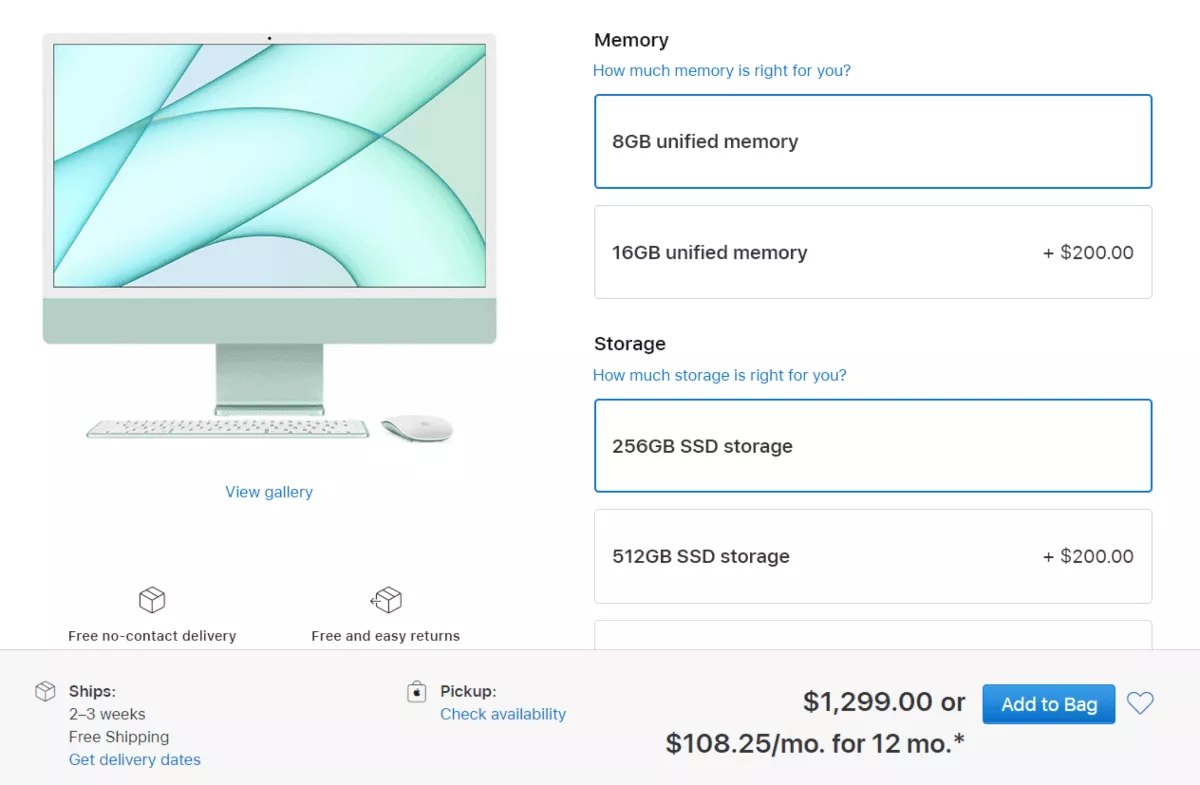
The upgrade is the classic upsell, because the customer is already committed to buying the product. They’ve probably already thought about buying the more expensive version too.
All you have to do is give them one more prompt. Once you’ve committed to buying a $2,000 laptop, it almost seems silly not to buy the extra performance!
Another Apple example coming your way. This time, the lucrative ‘AppleCare’ option. It’s based on a typical guarantee or warranty.
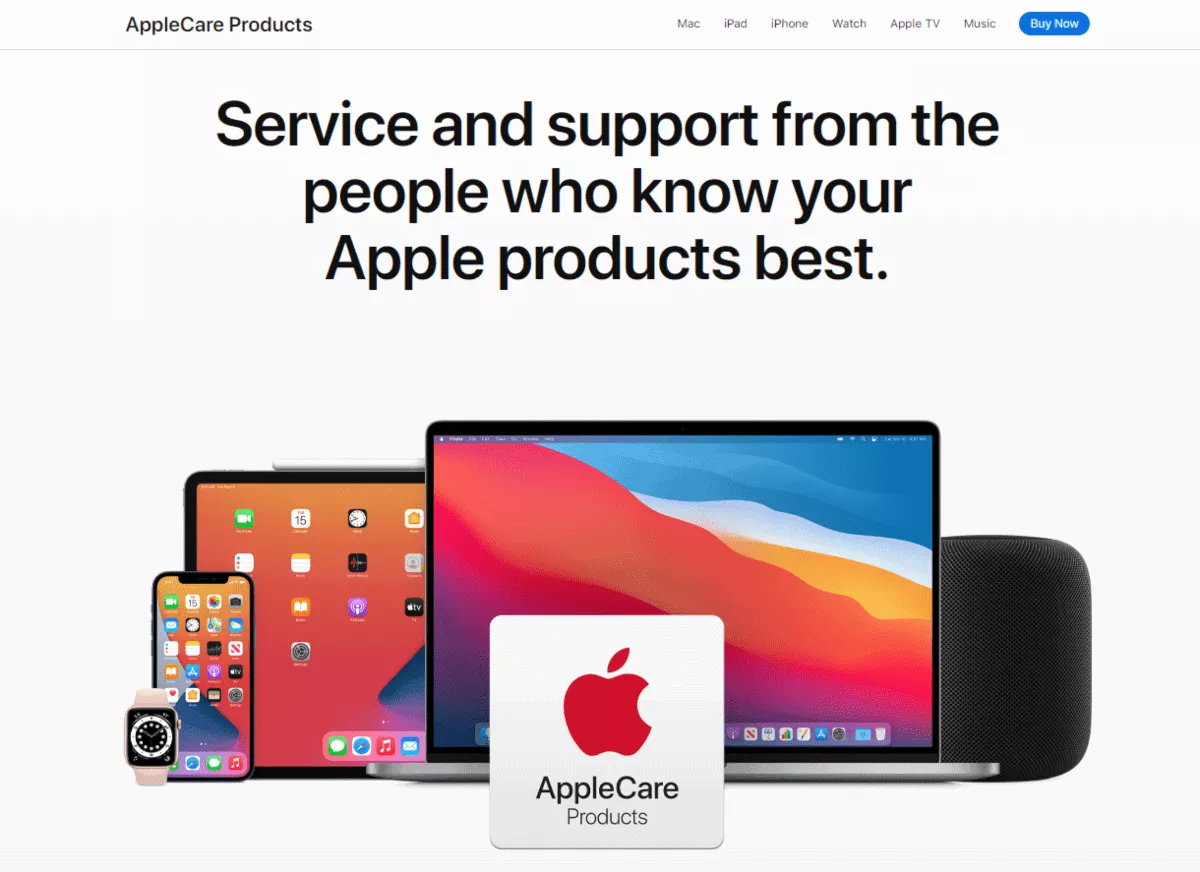
This is a great example of an upsell that is a win-win situation. You get the extra sale. The customer gets a useful extra service. And peace of mind. It’s the perfect upsell, because everyone leaves happy.
Amazon are the masters of the ‘related items’ upsell. Once you’ve committed to a purchase, you can group together items that add value. That’s the key here. Adding value to a purchase.
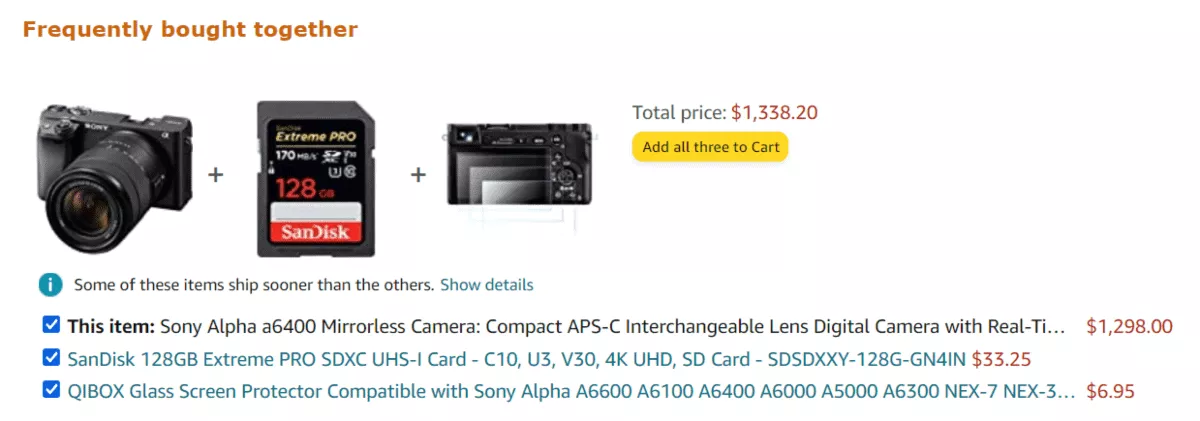
Try suggesting a tie to go with the shirt your customer is about to buy,
Or suggesting the season 1 boxset of Friends when your customer is about to buy season 2. Because, who starts at season 2??
Quick Tip
If you’re running a store through WooCommerce, you can download a plugin that will create this ‘related items’ upsell for you.
Sometimes, there is no logic or reason behind a good upsell. A general impulse buy often works a treat. This should be a super low price item that’s low risk and high return.
If your customer is about to check out with $50 of tuitions and guides, upsell a fun $5 eBook. You just made an extra 10% on the sale.
Or simply use it as a way to sell some fun, low cost items if it’s appropriate. Check out the fun cross-sells on Fancy.com. If your customers are in the right mood, they’ll happily buy a pirate corkscrew or fancy face mask!
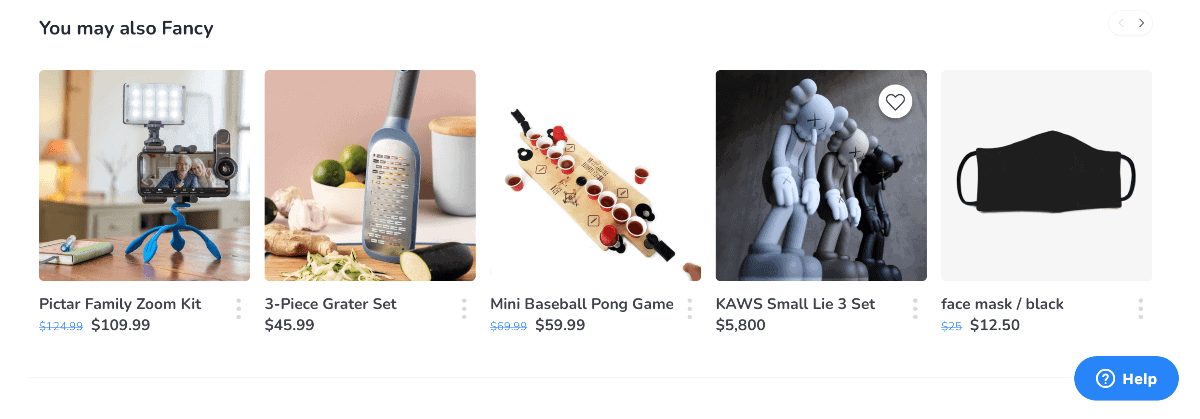
The only trouble with upselling is that it can be super annoying. As a customer, we hate to be bombarded by extra marketing. Especially when we’re right at the checkout.
The last thing you want to do is put them off the sale entirely.
This is upselling rule #1. There’s nothing worse than offering customers something unrelated.
It’s impersonal. It’s clearly automated. It creates a poor customer experience.
Follow Amazon’s lead, and group useful, relevant combinations together. Create bundles, and introduce relevant cross-sells.
Fashion company Reiss perfectly position their cross-sells with the phrase ‘wear it with’. If you’re buying a shirt, you’ll see this:
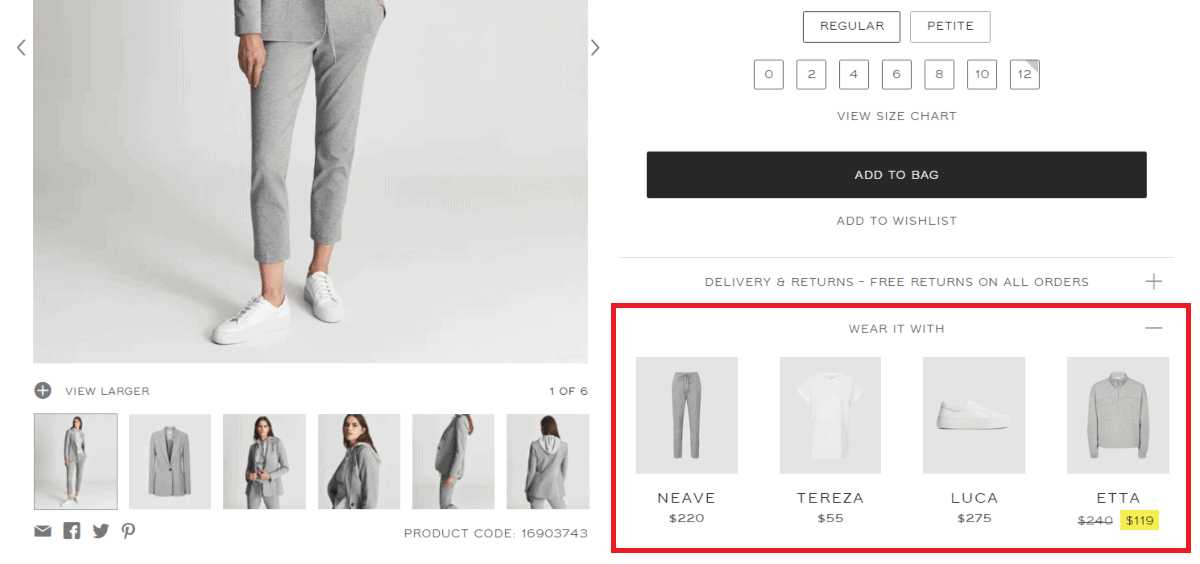
Remember, this technique accounts for 35% of all Amazon’s sales!
The key to upselling is getting the price just right. If the customer is spending $100, they’re not going to spend another $100 on an impulse purchase.
Aim for at least 60% lower price.
So for an item that costs $100, upsell a product that costs no more than $40. If you ask me, that’s right at the top of the limit. Upselling is about quick wins. So go for low-priced, relevant additions.
I touched on this before with the ‘AppleCare’ example, but it bears repeating.
The upsell only works if the customer wins. It’s all about adding value to the product, and creating a better experience for the customer. They’ve got to leave thinking the upsell was a great idea. AppleCare, for example, gives customers peace of mind. And that’s a price that most are happy to pay.
As soon as it becomes a blatant attempt to grab more money, you’ve left a bad taste in your customer’s mouth.
If you’re not adding value, it’s not a good upsell.
I can’t believe how many companies try to aggressively upsell before customers have reached the checkout point.
This is the quickest way to scare off customers. It might even cause your customers to abandon their cart and ditch their purchase.
Wait until the last possible moment to upsell. Capture your customers just as they’re clicking the buy button.
Not all your customers are rich! They can’t all afford your expensive upsells and additional products.
So try a downsell instead. This is particularly useful for software companies. Check out how Kinsta give you the option of choosing a cheaper subscription to their service.
It’s a great way to capture a sale for customers who aren’t quite ready to buy the full price option. You can always try to sell them the upgrade via email later on.
—
Upselling gets a bad reputation sometimes. But that’s only because companies do it so badly! If you offer better value with a relevant and timely upsell, there’s nothing to lose.
And a good 30% higher sales to gain!
Are you using upsells or cross sells? Let me know how they’re working for you.
Ben is a copywriter and editor from London. His work regularly appears in The Huffington Post, and he has worked on several successful copywriting campaigns for Sony UK. Feel free to connect with Ben via Twitter.